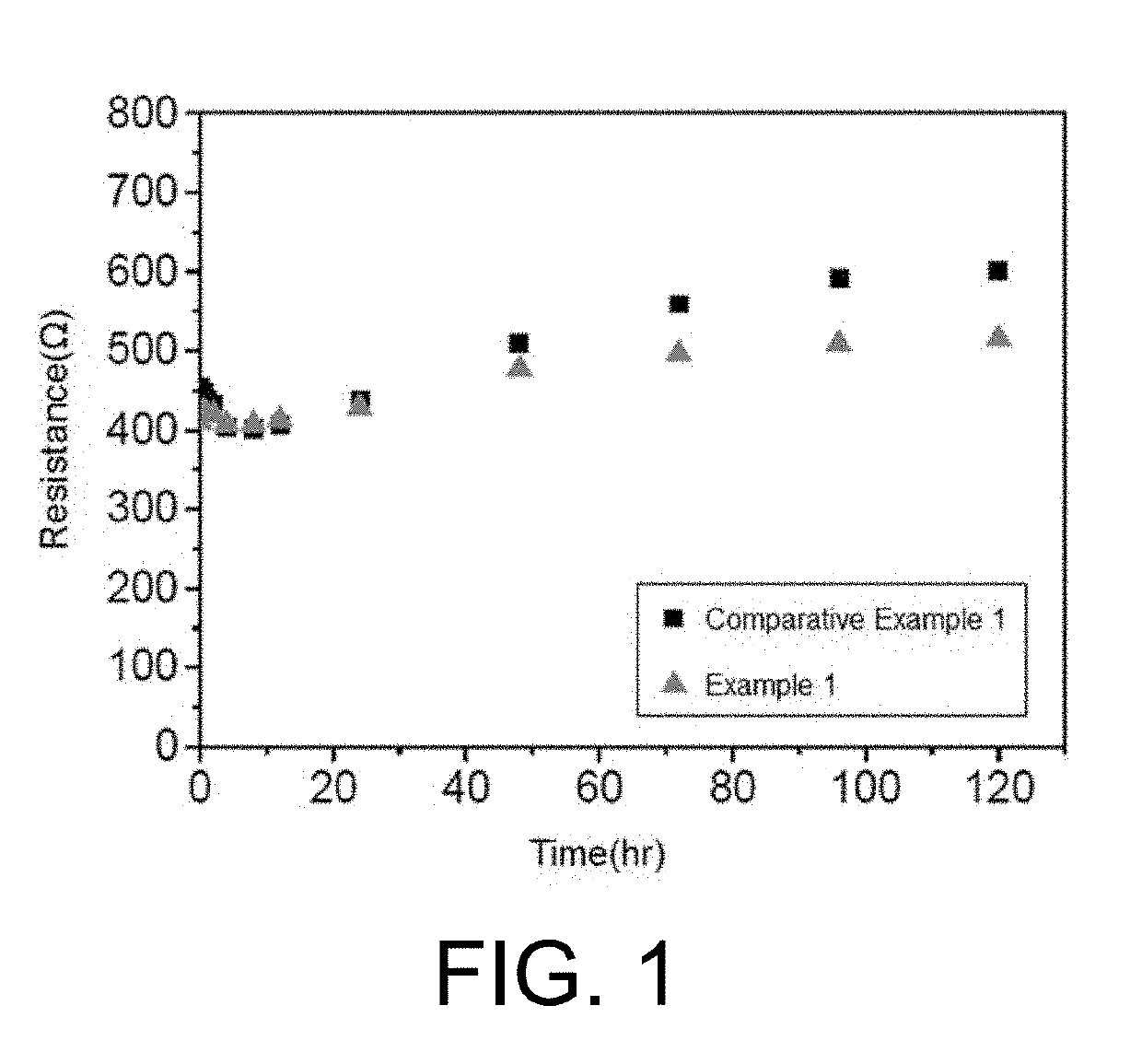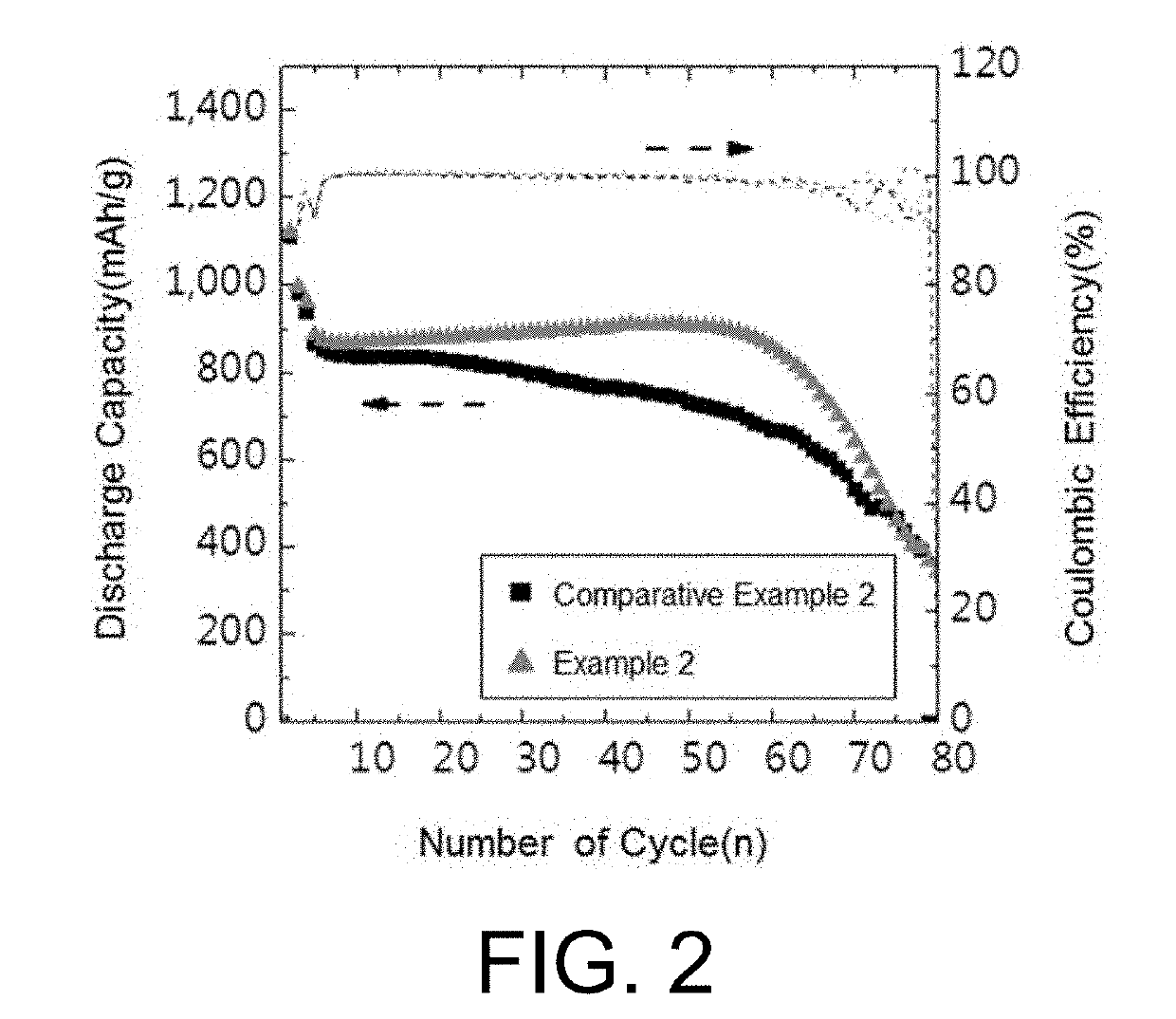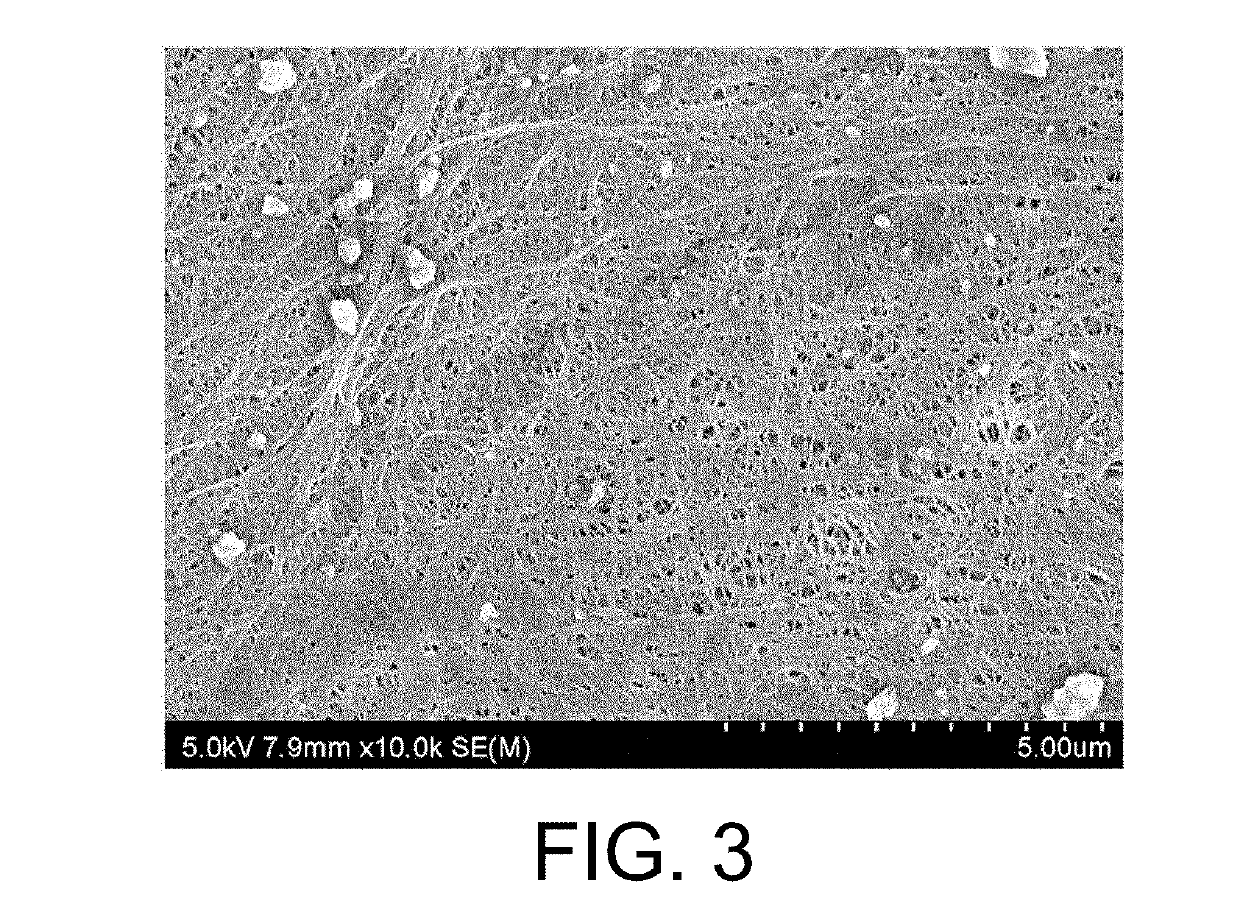Lithium electrode and lithium secondary battery comprising same
a lithium secondary battery and lithium electrode technology, applied in the direction of cell components, final product manufacturing, sustainable manufacturing/processing, etc., can solve the problems of rapid capacity decline, volume greatly expand, and commercialization has not been achieved, and achieve long life of lithium secondary batteries, suppress side reactions, and high capacity
- Summary
- Abstract
- Description
- Claims
- Application Information
AI Technical Summary
Benefits of technology
Problems solved by technology
Method used
Image
Examples
example 2
[0122]Sulfur was mixed with a conductive material and a binder in acetonitrile using a ball mill to prepare positive electrode active material slurry. Herein, carbon black was used as the conductive material, polyethylene oxide (molecular weight 5,000,000 g / mol) was used as the binder, and the mixing ratio of the sulfur:conductive material:binder employed was 60:20:20 in a weight ratio. The positive electrode active material slurry was coated on an aluminum current collector, and the result was dried to prepare a positive electrode.
[0123]Next, a surface treatment solution was prepared by dissolving 1% by weight of 1H,1H,2H,2H-perfluorodecanethiol in 2-methyltetrahydrofuran. Moisture was removed from the prepared surface treatment solution using molecular sieves so that the moisture amount in the solution became 10 ppm or less.
[0124]Subsequently, after reacting the prepared surface treatment solution and a lithium metal thin film having a thickness of 40 μm for 1 hour inside a glove ...
example 3
[0128]A coin-type lithium-sulfur battery was manufactured in the same manner as in Example 2 except that CMC / SBR was used as the binder when preparing the positive electrode and 70 μl of the electrolyte liquid was injected.
example 4
[0129]A coin-type lithium-sulfur battery was manufactured in the same manner as in Example 3 except that the mixing ratio of the sulfur:conductive material:binder used was 80:10:10 in a weight ratio when preparing the positive electrode.
PUM
| Property | Measurement | Unit |
|---|---|---|
| total weight | aaaaa | aaaaa |
| energy density | aaaaa | aaaaa |
| discharge voltage | aaaaa | aaaaa |
Abstract
Description
Claims
Application Information
 Login to View More
Login to View More - R&D
- Intellectual Property
- Life Sciences
- Materials
- Tech Scout
- Unparalleled Data Quality
- Higher Quality Content
- 60% Fewer Hallucinations
Browse by: Latest US Patents, China's latest patents, Technical Efficacy Thesaurus, Application Domain, Technology Topic, Popular Technical Reports.
© 2025 PatSnap. All rights reserved.Legal|Privacy policy|Modern Slavery Act Transparency Statement|Sitemap|About US| Contact US: help@patsnap.com



